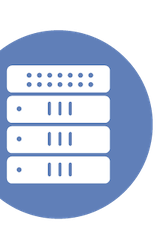In this post, Pete Welcher continues his excellent look at the presenters from Networking Field Day earlier this month. Looking at BlueCat Networks, he thought they made an interesting case for their managed DNS and IPAM address management solution. Though DNS and DDI can be seen as somewhat commodified, BlueCat argued that DNS provides network visibility, while DDI can serve as a single source of truth. Both are seen as vital for business workflow automation.
Illumio: Micro-Segmentation via the Endpoint
Pete Welcher has seen a number of Networking Field Day presentations. That;s why it’s impressive when he says that Illumio’s recent presentation may have had one the best demos the event has ever seen! They showed how their newly announced PCE SuperCluster can provide automated leveraging of endpoints, rather than dedicated firewalls, to provide uniform micro-segmentation onsite or in the cloud. Make sure to watch the demo for yourself with our comprehensive event video coverage.
Riverbed Enhanced SD-WAN
Pete Welcher returned for his fifth Networking Field Day last month, and it looks like he didn’t leave disappointed. In this post, he looks at what Riverbed presented at the event. They presented on their SD-WAN solution. Given the crowded field, Pete was interested to see how they differentiated themselves. They did this with a solid GUI and robust feature set, with an emphasis on digital experience and performance. He also shows how Riverbed’s history with WAN optimization naturally extends into SD-WAN.
Cisco Aggressively Ups Its SD-WAN Game
Cisco spent the bulk of their Networking Field Day presentation discussing recent updates to SD-WAN. Pete Welcher digs into the presentation in this blog post. For Pete, the big news of the presentation was Cisco bringing improved security to SD-WAN, with firewalls and other security features now included with Viptela SD-WAN. Pete sees this as the key to broadening SD-WAN into more diverse designs and topologies.
Improving Network Management Tools
In this post, Pete Welcher considers how to improve network management tools. The problem with these is that they are often sold to customers without any consideration for their use-cases and needs. He considers some of the path tracing tools he saw from SolarWinds at Networking Field Day as a great way to frame that information, and suggests that other network management tools would do well to adopt that methodology for other metrics.
Spotlight on Cisco Tetration and Cisco Intersight at NFD16
At the last Networking Field Day event, Pete Welcher and the rest of the delegates got to hear from Cisco. They presented on the latest updates on Tetration, as well as debutted Intersight, formerly known as Project Starship. In this post, Pete liked the updates he saw from Tetration, particular the emphasis on using it as a tool for security alerts and mitigation. As far as Intersight, Pete liked Cisco’s emphasis on platform security, but thinks the company will need to work for a while to earn customer trust of its management-as-a-service model.
NFD16: Automating Arista Networks
Pete Welcher shares his thoughts on Arista’s Networking Field Day appearance from last year. He reviews the company’s presentations on streaming telemetry, extensive programmability, and changes in routing architecture.
Keep Load Balanced With KEMP Technologies
Pete Welcher wasn’t familiar with KEMP Technologies prior to their presentation at Networking Field Day earlier this year. But after hearing their presentation, he found them to have some interesting ideas with an impressive portfolio of server load balancer solutions. He summerizes some of the notable features, and how using their SLB might provide a more consistent experience with hybrid deployments.
Veriflow at NFD16: Continuous Network Verification
Veriflow presented at Networking Field Day earlier this year, demonstrating their formal verification of enterprise networks. Pete Welcher considers how this enables for continuous checking of network state, and enables intent-based features for network engineers.
Pluribus Networks at NFD16
Pete Welcher wrote up his post to wrap his mind around where Pluribus Networks falls in the fabric management market. The company differentiates itself with a controller-less design running their Netvisor OS on whitebox switches. Pete liked their framework of managing a fabric as one large switch, rather than many individual devices.
Apstra: Networking by Intent
Pete Welcher got to see more from Apstra at last month’s Networking Field Day. The company is pushing back on other companies jumping on the intent-based networking bandwagon, calling it “intent washing”. Pete remains impressed that the company clearly defines what they mean by intent, remain firmly hardware agnostic, and approaching their intent fabric as a single managed entity. This presentation focused on how developers can use Apstra’s intent-based features, which impressed Pete with the versatility for a number of different network roles.
Kentik Finds Truth in the Traffic
Pete Welcher did his homework before seeing Kentik’s presentation at Networking Field Day last month. He watched their prior presentations and was familiar with the company’s offerings. After all that, the company managed to impress Pete with their latest appearance. Read the full post for his detailed impression, but overall, Pete liked that Kentik allows for quick usability with built-in queries and reports, with actual anomaly detection, rapid reporting, and data collection across appliance silos.
Looking Forward to Networking Field Day 16
Networking Field Day is coming up next week, and we’re happy to have Pete Welcher returning as a delegate. He’s getting to revisit a company he saw at a previous event, Apstra and their intent-driven networking solution. Overall, Pete is looking forward to the presentations and talking to his fellow delegates.
Apstra’s Unique Approach to Networking
Pete Welcher looks at Apstra’s intent-based networking automation solution, which he first saw at Networking Field Day last November. The company has a intention-based engine and a working fabric model, which Pete sees as a possible solution to organizations that want to automate without the hassles of scale. For Pete, it’s a solution to “fiddle-ware”. Instead of training an IT team on how to manage a series of kludgy scripts and programs, they can standardize around Apstra.
WAN Design Is Changing: What That Means for You
Based on discussions at Networking Field Day last year, Pete Welcher put together of why and how WAN design is changing. Pete sees this being driven by the needs of SaaS and cloud-based apps, which require low latency. This manifests in three design choices, centralized, decentralized, and regionalized internet access. This is a really thoughtful look on the topic, make sure to check it out!
Troubleshooting Lessons Learned
Pete Welcher shares his lessons in troubleshooting, in this case it was the dreaded complaint of “the Wi-Fi is bad”. He breaks down how he approached two different scenarios with different companies. Both ended up using Netbeez’s client-side monitoring solution to help get regular and accurate upload and download speeds, which saved both human time, and increased accuracy. Make sure to checkout Pete’s post for an in-depth look into his techniques.
Network Verification with Veriflow
Pete Welcher saw a demonstration of Veriflow’s continuous network verification solution. In it, he saw some similarities with what he saw from Forward Networks last year at Networking Field Day. Both use formal verification of a network, with Veriflow pulling information from devices on the network and building a topograpghical model. Pete still has many of the same questions about how this would work as he did for Forward Networks, but ultimately his conclusion is “cool stuff”!
Ixia: Good Defense Leads to a Good Offense
Pete Welcher wrote up his thoughts on what he saw from Ixia at Networking Field Day last year. The company has a diverse and sprawling product line, so Pete focuses the post specifically on their Network Packet Broker solution. Pete sets up the conversation by considering the benefits and costs of setting up network taps. This nicely sets up what he saw from Ixia’s Visibility tool, which seems to be a nice solution rather than tapping everything. This concentrated approach let’s a network engineer prioritize what they are looking for, rather than capture everything and trying to make sense of the mass of data.
What’s New in Networking: Docker at TFD12
Pete Welcher got a look at Docker’s plans to improve their networking from their presentation at Networking Field Day last November. Pete is still trying to wrap his head around what containers mean for networking. But in this post, he raises some prescient concerns. With the proliferation of containers and micro-services, he sees a world with the network getting even chattier, as container-based app components “pass the buck” to other components to actually get work done. It’s an interesting concern, and it’ll be interesting to see how this is addressed and hopefully resolved.







